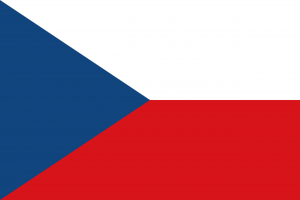Difference between revisions of "Language/Czech/Grammar/Gender"
m (Quick edit) |
m (Quick edit) |
||
| Line 68: | Line 68: | ||
===Learn Czech Grammar - Grammatical gender - YouTube=== | ===Learn Czech Grammar - Grammatical gender - YouTube=== | ||
<youtube>https://www.youtube.com/watch?v=WFf-WhcezoE</youtube> | <youtube>https://www.youtube.com/watch?v=WFf-WhcezoE</youtube> | ||
==Related Lessons== | |||
* [[Language/Czech/Grammar/Conditional-Mood|Conditional Mood]] | |||
* [[Language/Czech/Grammar/Inclusive-Case-in-Czech|Inclusive Case in Czech]] | |||
* [[Language/Czech/Grammar/Possessive-Case-in-Czech|Possessive Case in Czech]] | |||
* [[Language/Czech/Grammar/How-to-use-the-Modal-Verb-(Can)|How to use the Modal Verb (Can)]] | |||
* [[Language/Czech/Grammar/Verb-There-to-be-in-Czech|Verb There to be in Czech]] | |||
* [[Language/Czech/Grammar/Nouns|Nouns]] | |||
* [[Language/Czech/Grammar/Verb-to-speak-in-Czech|Verb to speak in Czech]] | |||
* [[Language/Czech/Grammar/Future-Tense|Future Tense]] | |||
* [[Language/Czech/Grammar/Modal-Verb-(Must)-in-Czech|Modal Verb (Must) in Czech]] | |||
* [[Language/Czech/Grammar/Instrumental-Case-in-Czech|Instrumental Case in Czech]] | |||
{{Czech-Page-Bottom}} | {{Czech-Page-Bottom}} | ||
Revision as of 21:35, 25 February 2023
Hi Czech learners! 😊
In this lesson, we will learn about Czech gender and how to use it correctly. We will look at the rules, examples, practice and quiz sections. Let's get started!
Rules
Gender in Czech is a grammatical category that affects nouns, pronouns, adjectives, articles, and verbs. There are three genders in Czech: masculine, feminine, and neuter.
Masculine nouns usually end in -a, -e, -o, -ý, -í, -ů, -ť, -ě, -r, -l, -n, -t, -s, -z, -č, -ř, -d, -h, -j, -k, -m, -v, -x, -y.
Feminine nouns usually end in -a, -e, -i, -í, -ka, -ko, -ma, -ná, -ta, -tka, -tko, -uše, -že.
Neuter nouns usually end in -o, -e, -í, -um, -é, -ě, -í, -ů, -ět, -ění, -ěství, -ěstí, -átko, -ítko, -ěcko, -íčko, -íře, -íří, -ířka, -ířko, -ířské, -ířská, -ířský.
Examples
The following table provides some examples of Czech nouns and their genders:
| Czech | Pronunciation | English Translation | Gender |
|---|---|---|---|
| muž | moozh | man | Masculine |
| žena | zheh-nah | woman | Feminine |
| dítě | deet-yeh | child | Neuter |
| stůl | stoo-l | table | Masculine |
| kniha | knee-hah | book | Feminine |
| auto | ow-toh | car | Neuter |
Practice
To practice using gender in Czech, try writing sentences with the nouns from the table above. For example:
Muž sedí u stolu. (The man is sitting at the table.) Žena čte knihu. (The woman is reading a book.) Dítě jezdí autem. (The child is driving a car.)
Quiz
Questions
1. What are the three genders in Czech? 2. How do you know if a noun is masculine? 3. How do you know if a noun is feminine? 4. How do you know if a noun is neuter?
Answers
1. The three genders in Czech are masculine, feminine, and neuter. 2. Masculine nouns usually end in -a, -e, -o, -ý, -í, -ů, -ť, -ě, -r, -l, -n, -t, -s, -z, -č, -ř, -d, -h, -j, -k, -m, -v, -x, -y. 3. Feminine nouns usually end in -a, -e, -i, -í, -ka, -ko, -ma, -ná, -ta, -tka, -tko, -uše, -že. 4. Neuter nouns usually end in -o, -e, -í, -um, -é, -ě, -í, -ů, -ět, -ění, -ěství, -ěstí, -átko, -ítko, -ěcko, -íčko, -íře, -íří, -ířka, -ířko, -ířské, -ířská, -ířský.
➡ If you have any questions, please ask them in the comments section below.
➡ Feel free to edit this wiki page if you think it can be improved. 😎
Videos
Learn Czech Grammar - Grammatical gender - YouTube
Related Lessons
- Conditional Mood
- Inclusive Case in Czech
- Possessive Case in Czech
- How to use the Modal Verb (Can)
- Verb There to be in Czech
- Nouns
- Verb to speak in Czech
- Future Tense
- Modal Verb (Must) in Czech
- Instrumental Case in Czech
